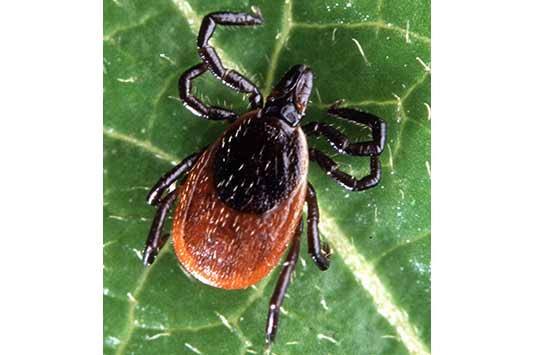Q. Some companies in my area are spraying lawns for tick control, which I don’t think is necessary. I concentrate on vegetation next to the house and brush areas on the perimeter. Do you think it’s necessary to spray lawns for tick control? J.B., Va.
A. Most ticks live in tall grass or areas with brush or heavy leaf litter. Manicured lawns aren’t good habitats. Even if a tick drops off a host onto a well-maintained lawn, its chances for survival are limited. That said, some customers want added security by having the lawn sprayed. If you explain it’s not necessary and they still insist, you must make a decision whether to spray or not. I’d try to talk the customer out of it.
Q. I’m finding scattered larvae and adults of a Dermestid on a bed. I think they’re furniture carpet beetles. There’s no quilt, comforter or down pillow. The carpeting is synthetic, and the mattress is thick foam. Any thoughts on a source? J.D., Kan.
A. Check the mattress again. Thick, expensive foam mattresses often contain hog hair. If you examine the mattress carefully, you can usually find short hairs sticking out from the surface. If this mattress contains hog hair, it’s probably the source. The mattress must be replaced or fumigated. If the mattress isn’t the source, look overhead. The infestation might be coming from the attic and dropping through a ceiling fixture.
Q. I’m dealing with cicada killer wasps in a poorly maintained lawn. I seem to remember you saying you need lots of water when treating for this pest. I don’t have a power spray rig, so would dusting the holes work? Why do you need lots of water? K.H., Calif.
A. Cicada killer wasps usually spend the night in shrubbery nearby holes. The next morning, they often begin digging a new hole and never return to the original hole, which has been provisioned with a cicada or other large insect and where the wasp has laid the egg. Therefore, treating holes is labor-intensive and seldom provides any control. This pest is easy to control if you take the right steps. Power spraying the bare areas of the lawn with a residual insecticide is probably best. You need enough water to wet the soil to a depth of about 0.25 in., which carries the insecticide out of the sun’s reach and creates a thicker barrier through which the wasp must dig, improving kill. Too little water often results in poor kill and a retreatment. An alternative is to apply granules and water them in to 0.25 in.
Q. A residential customer saw a snake crawl into a dryer vent on her house. Can the snake get into the house? What can be done to eliminate the snake? E.R., La.
A. If the vent duct is secure without openings at the joints, the snake should be confined to the duct, and it can’t get into the house. Consider installing a one-way flap on the vent exterior so the snake can leave, but can’t get back in. Turning on the dryer should hasten the snake’s departure.
Email your questions about insect identification and pest management technologies and techniques to Dr. Mampe at detomol@aol.com. Your questions most likely will be printed and answered in one of Pest Management Professional’s upcoming Ask the Expert columns. You can reach Dr. Mampe, an industry consultant, at dentomol@aol.com.

Leave A Comment